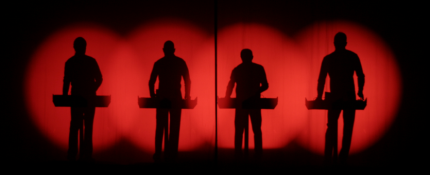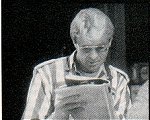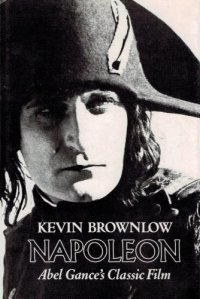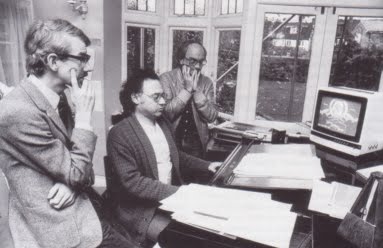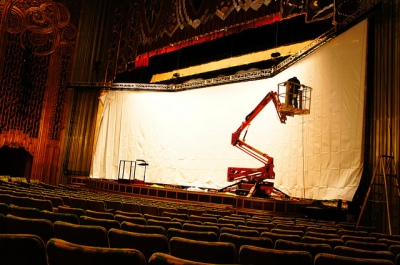One of the most momentous discoveries of my musical life happened almost by accident. I was a teenager at boarding-school, just hanging out one afternoon, when one of my friends sauntered by.
“Read about a pretty cool album in this week’s New Musical Express. You should check it out.”
He ambled away down the corridor, and after a few minutes returned with a copy of the music broadsheet. On the cover were four men dressed in red shirts and black ties, hair plastered down, heavily made up, their faces locked in expressionless sideways gazes, arranged in a highly stylized shot that reeked of both Teutonic totalitarianism and mechanistic macho.
“I think this might be right up your alley”. No, he wasn’t making a crack at my expense. My friend knew that I was heavily into avant-garde classical music, and especially the German avatar of progressive and electronic music, Karlheinz Stockhausen.
He opened the paper to the feature review. It was of an album called The Man Machine, and those four men on the cover were its creators – collectively known as Kraftwerk.
From the moment I started reading about this band I realized this was music I had to investigate. I inhaled the article. I was only just starting to listen to pop and rock seriously; up until then I had been strictly into classical and jazz, assembling a semi-improvisatory ensemble when I was 12. But recently I had discovered Pink Floyd and David Bowie and was getting really fired up by these new musical worlds. By the time I finished the article I knew I had to have the record, and headed down to the local record store as soon as I could. That record is still with me, one of my prized possessions, albeit with one chewed corner courtesy of a family pup who bypassed Bach and Basie in favor of Krautrock, discriminating fellow that he was. On a good system this record sounds like you are inside the man machine. Those analog synths and drums are fat. None of the reissues or even the American pressing comes close to the sound of that original English pressing.
I will never forget the first time I played the album. It was on headphones and I didn’t just listen. I was absorbed into the music, and into a sound world unlike any other. The electronic canvas was so rich it felt organic, and the short, motivic melodies were immediately catchy. The occasional human voices, often fed through a range of processing devices, were flat and mechanistic, yet also oddly imbued with real feeling. There was a sense of melancholic machine chanting. The B-side led off with a number that is the closest the group has ever come to a conventional single, The Model. The song plays on how we objectify feminine beauty, turning models into remote, almost technological creatures: infinitely desirable, and infinitely unapproachable. It is an incisive piece of musical observation, made all the more poignant for the yearning that lurks just beneath the surface. That yearning is transmogrified into something both familiar and otherworldly in the next song, Neon Lights, a tour de force of electronic expressionism. I think it is their greatest track, a road song of the modern urban experience, driving through canyons of steel with the neon lights of the city dancing and dazzling the senses. Cascades of shimmering synthesizers ripple over a relentless march beat and a simple, haunting melody, again tinged with melancholy.
Neon lights
Shimmering neon lights
And at the fall of night
The city’s made of light.
Many a time I have found myself on a freeway, sometimes with a light or heavy rain to deepen the electric shadows, with that music playing on the stereo or in my memory. I am sucked into a netherworld of strange, Metropolis beauty. (Metropolis, not surprisingly, is the title of another track on the album: an apt hommage to Fritz Lang’s silent epic which defined the modern cityscape on film, in our heads, and finally in reality).
I still hear details in that record that I’ve not heard before, it is that well-crafted. At the time of the album’s release I was not alone in the opinion that this group was creating something unique, not just in pop music, but in music, period. I immediately bought their earlier albums, Autobahn and Trans-Europe Express.
I quickly discovered that Kraftwerk were sui generis, and today they are hailed as the most influential group ever, even more so than The Beatles. And it’s not just the music which continues to ripple through practically every genre, even non-electronic music. (Listen to Philip Glass or Steve Reich and Kraftwerk is right there at the heart of their work. No surprise then that their appearance at Disney Hall is part of a citywide celebration of musical minimalism). Kraftwerk’s stripped-down sense of design, for example, was a huge influence on Peter Saville, who designed covers for Joy Division and New Order, and spawned a million imitators.
At the time these record covers were the complete opposite of Roger Dean’s visual fantasias for Yes, as was the music. Everything was stripped down to the essentials. Repetitious and hypnotic rhythms were so carefully layered that they avoided any of the dead-hand quality of their numerous imitators. Melodies were short and mesmeric, and full of romantic yearning. Kraftwerk’s tunes are some of the most memorable in pop. That romantic quality evokes the human in the machine, and it is in that domain that Kraftwerk’s music breathes and finds its staying power. The only other techno act that I think approaches that quality is Massive Attack, but it does so with more conventional vocals laid on top of the electronic palette.
The thing about Kraftwerk is that it’s a band whose work still sounds incredibly modern at the same time as feeling timeless. No matter that you can hear the evolutions in electronic instrument technology from album to album. (Techno Pop, formerly Electric Café, is suffused with the new digital technology of Yamaha’s DX-7 synth, and was the least well-received of their albums, though in its new remastering it is redeemed). Timeless, indeed, as the masterworks of Bach, Beethoven, Brahms and Wagner that came out of Germany’s classical tradition. But it was in reaction to that tradition that Kraftwerk crafted its distinctive sound and ethos.
After the war, German musicians wanted to do, and be, anything so long as it was far away from the German classical tradition which had been heavily tainted by its co-option by Hitler into his promotion of the Aryan ideal. Young musicians needed to turn their back on centuries of German high culture, but they also shied away from the popular forms of their conquerors. Ralf Hutter and Florian Schneider started Kraftwerk in 1970 within the loose umbrella of the Krautrock movement, and their early albums used conventional instruments and free-form improvisation seasoned with the spice of electronic manipulation. But their compositions were essentially conventional in method and execution.
That all changed with Autobahn, whose single A-side concept piece was an electronic realization of the aural and aesthetic experience of crossing Germany via the new freeway system that had no speed limit.
It was a revelation, both for what electronics could now do, and for its reinvention of what a pop record could be. And it was as potent in its ideas — of sound as movement, and vice versa; of engagement with technology as romantic — as it was in its execution. Its successors were no less influential. In particular, Trans-Europe Express, which did for rail travel what Autobahn had done for motorways. Together with The Man Machine and Computer World, these albums created a sense of what it felt like to exist as a human being in the late 20th century: one’s humanity slowly leeching away from the organic experience of life, through the mediation of technology, into something both immediate and distancing, something “other”.
On Trans Europe Express people remember the epic title track and its extension, Metal on Metal, but they forget about the haunting Hall of Mirrors, a meditation on identity and celebrity with glistening synthesizer figures rippling against a pointed refrain (“Even the greatest stars discover themselves in the looking-glass”), and the elegiac Franz Schubert, a techno call-out to Germany’s most lyrical and poetic composer, who in the here and now is buried beneath the literal and aesthetic railroad tracks of the new Germany.
It is often claimed that hip-hop begins with Afrika Bambaataa’s 1982 club hit Planet Rock, which quotes from Trans-Europe Express and Computer World. I remember hearing this on the dance floor of London’s legendary Camden Palace, and being blown away both by the fact that I knew where the melody and rhythm had come from, and that they now existed in this cool new context.
But back to The Man Machine, which I think is Kraftwerk’s most fully realized and perfect record. This was the album in which the individual members of the band finally disappeared into their conceptual creation. They became their own robots, literally using mechanical alter-egos in videos and live performance.
This week I revisited this album in vivo, so to speak, as part of the band’s 4-day trip through their complete oeuvre in live performance in the iconic performing space of the Walt Disney Concert Hall in downtown Los Angeles.
Two modern icons working in tandem, so to speak.
Only Ralf Hutter of the original band still remains, one of four “operators” onstage (Fritz Hilpert, Henning Schmitz and Falk Grieffenhagen), all standing behind minimalist work stations (one of whom “mixes” the 3-D visual component of the show in real time).
Quite apart from the excitement of finally seeing one of my favorite bands in action, I couldn’t wait to see how music that is so essentially “canned” would work as a live show. Stripped of the crowd-pleasing elements of the typical live rock or pop show, like barnstorming guitar or drum solos, I wondered how well the Kraftwerk aesthetic of complete control and pre-determination would play for an audience.
It took about a minute for my doubts to evaporate. First of all the sound, the best I’ve ever heard at a live rock show, was both muscular and delicate, subtle and forceful, going as deep as any bass I’ve ever heard. And it travelled through the space – around, about, and in and out. No doubt those famous Disney acoustics had a hand in rendering the Kraftwerk sound so vividly and precisely.
Whatever elements were pre-programmed, nothing about the musical performance felt canned, and the personality of each member of the band clearly emerged in the ways in which familiar musical lines were varied, embellished, speeded up and slowed down. In a nice touch at the end, each player had a chance to improvise at his work station, and I was left wishing they had done a little bit more performing on the musical fly.
But it was the visuals that added a whole new dimension to the Kraftwerk experience. On a large screen behind the four band members (who wore black suits with grids on them), a mixture of ultra-high tech and almost retro video, fully exploiting the ability of 3-D imagery to pluck at your eyes, created a fully integrated “happening”.
In fact, the whole evening felt closer to a piece of performance art than to a concert, which is no doubt one of the reasons why these events have been mostly presented in museums and architecturally significant spaces rather than stadiums. Viewing and hearing the Kraftwerk oeuvre as a whole one was struck not just by its originality and uniqueness, but by its prophetic nature.
Everything about how technology has come to shape our lives was there in this extraordinary music, created years before this phenomenon fully came to pass. Nowhere was this more evident than in a sequence from Computer World.
Here, patterns of fluorescent numbers flashed by and undulated towards us in sensual waves, while the music alternatively spiked and caressed, threatened and lulled. It all perfectly caught the dichotomy of our love-hate affair with personal technology.
The most chilling note was sounded with the performance of Radioactivity from the lesser-known album of the same name.
Against a deeply funky groove, the names of nuclear incidents like Chernobyl and Harrisburg flashed on the screen, and then —
Germany has committed itself to going nuclear-free within a couple of decades. In a nice twist of fate, the country that originated modern mechanized warfare with the objective of cultural subjugation and annihilation has become more sensitive to the lessons of technological misdeeds than its conquerors. Maybe the rest of us, those who are inclined to forget the lessons of history, and are unwilling to accept the prophecies of climate science, are indeed destined to dance with Death into oblivion. If so, it will be in beautiful buildings like Disney Hall, and all to the techno stylings of a generation of musicians who confronted the dehumanizing legacy of their forefathers by seeking the man in the machine, and vice-versa. It is an irony at which Mr. Hutter would no doubt smile.
And in the world of Kraftwerk cover bands —
